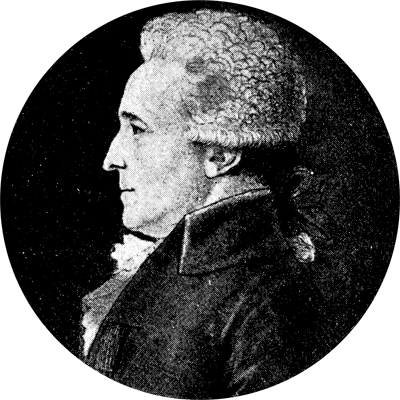(E.P.E. de Rossel, (ed.), 1808, Voyage de Dentrecasteaux envoyé à la recherche de La Pérouse Vol. I: 176, quoted in Frank Horner, 1996, Looking for Lapérouse, Melbourne University Press: 113).This coast [Western Australia] was ‘extremely bare and very dry, nothing but sand dunes intersected by dark green heath or steep rocks. There seemed no hope of finding shelter. But for the smoke that rose in one place, the coast might have been thought uninhabited’
On 9 February 1791, France’s National Assembly agreed to send a humanitarian expedition under Rear-Admiral Antoine-Raymond-Joseph Bruny d’Entrecasteaux to search for de Lapérouse. The mission was to also take scientists and artists to make further scientific studies for France.
On 28 September 1791, the Recherche and Espérance sailed from Brest with orders to explore the coasts of Western Australia, Tasmania and the Gulf of Carpentaria, as well as New Caledonia, the Solomons, and north-east New Guinea. At Recherche Bay in the south of Van Diemen’s Land in April–May 1792, the ships’ naturalists collected some 5,000 plant specimens including the Tasmanian blue gum Eucalyptus globulus.
The expedition then sailed north to the Admiralty Islands where inhabitants had reportedly been seen wearing French uniforms, but no trace of de Lapérouse was found. In December 1792 d’Entrecasteaux headed for south-western New Holland discovering Esperance Bay. Anchored off Observatory Island until 17 December, the French naturalists made many other important botanical discoveries including Anigozanthus rufa, red kangaroo paw. Returning to the Pacific via Van Diemen’s Land, the expedition passed the island of Vanikoro unaware that de Lapérouse’s ships had foundered there in 1788.
D’Entrecasteaux died of scurvy on 21 July 1793. Many of the crew died at sea, before the expedition reached the Dutch East Indies in October 1793. Here, they learned that the French King had been executed, a republic proclaimed and war declared on most of Europe. The papers and research from the expedition were captured by the British but returned after the war in 1802.
 Portrait of Antoine-Raymond-Joseph Bruny d'Entrecasteaux
Portrait of Antoine-Raymond-Joseph Bruny d'Entrecasteaux
Reproduced courtesy of the Mitchell Library - State Library of NSW.
